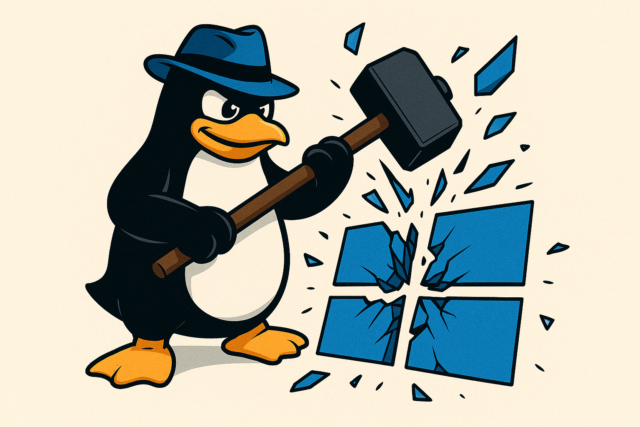
It’s raining Linux distributions! Earlier today, we told you about the release of Manjaro 25. And now, Fedora Linux 42 has officially arrived. If you’ve been looking for a fast, polished, and privacy-respecting replacement for Windows 11, this open source operating system could be the one.
This new Fedora release gives users a powerful and flexible desktop experience across multiple editions and devices. Whether you prefer GNOME or KDE, use x86 or Apple Silicon, or just want to ditch Microsoft’s operating system entirely, Fedora 42 definitely has something to offer.
SEE ALSO:
The default Fedora Workstation edition ships with GNOME 48. The desktop now uses dynamic triple buffering, which helps eliminate skipped frames and janky animations. Notifications are smarter now too, stacking together by app instead of taking over your screen. On top of that, GNOME’s new well-being features include screen time tracking and reminders to move around.
Accessibility has improved as well. The Orca screen reader finally works better on Wayland, with keyboard shortcuts functioning properly. These kinds of refinements are the difference between an OS that just works and one that works for everyone — you got that, Microsoft?
But wait, it’s not just GNOME users getting love! Fedora 42 marks a major milestone for KDE fans: the KDE Plasma Desktop is now a flagship Edition. It’s no longer treated like an afterthought. KDE Plasma 6.3.4 is here with a ton of useful upgrades. Drawing tablets are easier to configure, fractional scaling looks cleaner, and system monitoring tools are more detailed and useful.
Fedora KDE now officially supports Power (ppc64le) systems, with live images ready for machines like the Talos Workstation. That said, it’s a best-effort effort, but the fact that it exists at all is impressive. For ARM-based devices, Fedora KDE includes support for running x86_64 apps using FEX emulation. That means things like Steam or even some Windows apps can now work on ARM, opening the door to new hardware options beyond traditional x86 laptops and desktops.
And for those using Apple Silicon, Fedora Asahi Remix 42 is now available too. It’s a full Fedora experience on Mac hardware, complete with KDE Plasma 6.3 or GNOME 48, depending on your preference. It even includes a custom Calamares-based installer to make setup easier.
Microphone support is now working on MacBooks. FEX integration is here too, letting you run x86 apps right on your ARM-based Mac. There’s also a Fedora Server option for headless deployments, and a Minimal image if you want to build your own experience from scratch.
Other Fedora 42 updates include faster boot times, thanks to tweaks to Plymouth, and the switch to JXL for wallpapers, cutting down file sizes without sacrificing quality. The Anaconda installer now runs as a native Wayland app, syncing language settings more effectively. Executables that were once split between /usr/sbin and /usr/bin have now been unified, simplifying the filesystem layout.
For new users, Fedora Linux 42 can be downloaded here immediately. Upgrading from a previous version is easy using the dnf system-upgrade command in the terminal. For Apple Silicon users running Asahi Remix 40 or 41, you can upgrade the same way — just skip GNOME Software, as it’s not supported for this.




